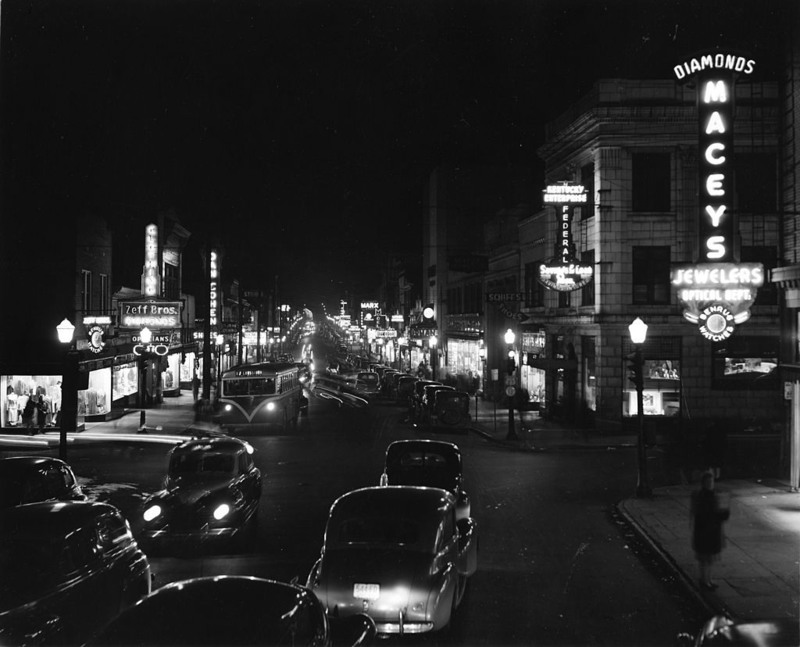
Long before Las Vegas wore the crown of America’s “Sin City,” there was Newport, Kentucky.
Today Newport is a small, upstanding U.S. city near Cincinnati, yet during Prohibition, and for decades after, Newport was a hotbed of gambling, prostitution, organized crime, and widespread corruption.
If you had no idea that Newport once had this reputation, don’t feel too bad. In large part, that’s likely because its age of corruption just didn’t last. By the 1960s, the city was ready for a change. And the unlikely event that kicked off the city’s transition? A pulpy scandal involving, of all things, the frame-up of a former football star. So buckle-up, dear readers, for the story of Newport, George Ratterman, and the Night That Never Was.
First established in 1795, the city of Newport grew steadily on its waterfront spot at a convergence of the Ohio and Licking Rivers. The first signs of trouble began during the Civil War, when a prostitution industry sprung up to serve Union soldiers stationed on the Ohio side of the river. By the 1920s, Prohibition brought a widespread criminal element to the city, as speakeasies (or “tiger blinds” as they were known in local slang) began appearing. Just across the Ohio River, Cincinnati would come to be known as one of the hearts of bootlegging in the day, but much of what was sold and moved through that city came from Newport.

When Prohibition ended in 1933, the entrenched criminal underworld in Newport had to find other sources of revenue, and a number of casinos and brothels moved in to fill the void, bringing with them widespread institutional corruption among the police and local government.
During this time, the city was under the constant sway of gangland mob bosses, and violence wasn’t uncommon as various factions competed with one another.Over the next couple of decades, the city of Newport enjoyed a solid reputation as a sin city, but by the late 1950s, things began to change. The growing desert city of Las Vegas had begun to lure the attention of serious criminal enterprises, and Newport’s star as a mecca of gambling and prostitution had begun to fade. By the early 1960s, locals were ready for a change as well.
A civic organization known as the Committee of 500 rose to prominence around this time, made up of Newport residents who wanted to take the city back after decades of corruption. The group was growing quickly, but they needed a face to put to the cause, and they found the perfect mug in the All-American square jaw of a former football star, George Ratterman.
Ratterman, a native of Cincinnati, had made a name for himself in the mid-1940s playing college sports at Notre Dame, including tennis, baseball, basketball, and most notably, football. He went on to a career in the fledgling NFL, playing for teams including the Buffalo Bills, the New York Yanks, and finally the Cleveland Browns. Ratterman gained a headstrong reputation that led The New York Times to refer to him as a “cocky little…
The post How Newport, Kentucky, Lost the Title of ‘Sin City’ appeared first on FeedBox.